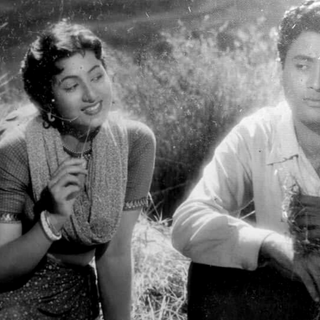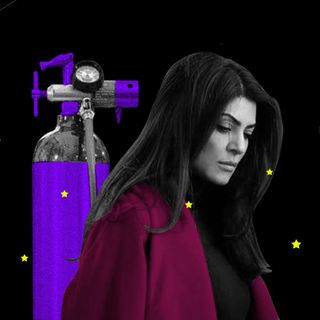In The Buzz Cut, we bring you a round-up of all the weird, controversial, and wonderful stories we’ve been reading all week.
Dadi Chandro Tomar was in her 60s when she picked up a gun for the first time — she wanted to be a competitive shooter, who would go on to win several national competitions and earn 30 laurels to her name. Her journey as the world’s professional sharpshooter ended up inspiring the award-winning Bollywood movie Saand ki Aankh. Lovingly called “Shooter Dadi,” she passed away at the age of 89 due to Covid-19 yesterday. Her legacy is more than her professional success though — it is a story of defiance and persistence.
*
What is it like to live through a pandemic as an Indian woman? Stories — of nurses, doctors, vegetable sellers, social media relief workers, homemakers — recount the guilt, fear, and rage of living through a time anything but an equalizer. Some of them identify with the “22-year-old Priya” — the subject of a social media meme that goes something like this: “’If not Modi then who?’ I would rather vote for that 22-year-old Priya on Instagram who’s verifying oxygen cylinder.”
*
The verdict is out: TikTok trumps other social media experiences, by being the exact opposite of an “experience.” It is a collection of cultural vibes, one can say: the “chill” scene makes room for meme dancers, practical jokes, existential dread. “Spotting a vibe, recording it, and sharing it becomes a goal in itself” — connecting the digital life with the physical one more than ever. “The vibe moves from the internet into the physical world and back again, a wavelength on the radar of our perceptions.” We aren’t far from the time when that 80s vibe will be supplanted for a TikTok one.
*
The new series Shadow and Bones has something curiously in common with period drama Bridgerton: it introduces racism into a fantasy world by showing the protagonist as someone of half-Chinese descent, who was written as a white character in the book. But the seemingly progressive swap raises questions about identity and inclusion: “A person of color embodying a role that’s only half-tailored to fit them makes for dissatisfying and often confusing viewing—like unexpectedly seeing yourself in a funhouse mirror when you wanted a regular one.”
*
It’s always helpful to revisit the past to understand the present better — this history of modern medicine in India, starting from the 1940s, relays what it took to make specialized doctors and medicine the acceptable standard of care. Movies from Bombay and Kolkata, political opposition, and macabre tryst with deadly infections brought us to where we are. The second Covid19 wave has spurred conversation around universal health care, and in that, it “vindicated the wisdom” of those who fought non-science and other folklore in the process.
*
While the U.S.S.R. was leading the space race in the 1960s, art was taking an interesting shape on the ground. Soviet artists looked up to rockets, satellites, record-breaking cosmonauts for inspiration in a conservative political system — soon, the popularity of cosmic designs exploded. Space art, in the form of paintings, murals, and tiffin boxes, was a way for Soviet artists to fight religion and ideological oppression: “for the majority, it was the only way to experience the thrill of boundless discovery.”
*
It is a truth universally acknowledged that every single McDonald’s feels exactly the same — the vibe, the menu have endured time and change. The fast-food chain will introduce a celebrity meal order next month, with the pop Korean brand BTS at its center. The marketing gimmick stood out: it was more than a typical celebrity endorsement, it was trying to create an illusion of intimacy by showing all seven members of BTS eating the exact same thing at McDonald’s, down to their customized drinks. The message was “that despite their fame, a celebrity in a McDonald’s has to choose from the same menu you do.”
*
From self-help books to religious sermons, the pursuit of ‘finding yourself’ or ‘being true to yourself’ is alluring, but maybe a sham. Social media and corporates have a role to play in framing this irresistible pull of authenticity, which profits off of our innermost desires and insecurities. Then why does everyone — monks, existentialists, hipsters — want to be authentic? “Our situation is ironic because the absolute – the basis or reason for our existence – is forever unavailable to us, and yet we can’t help but strive for wholeness.”




